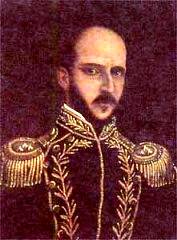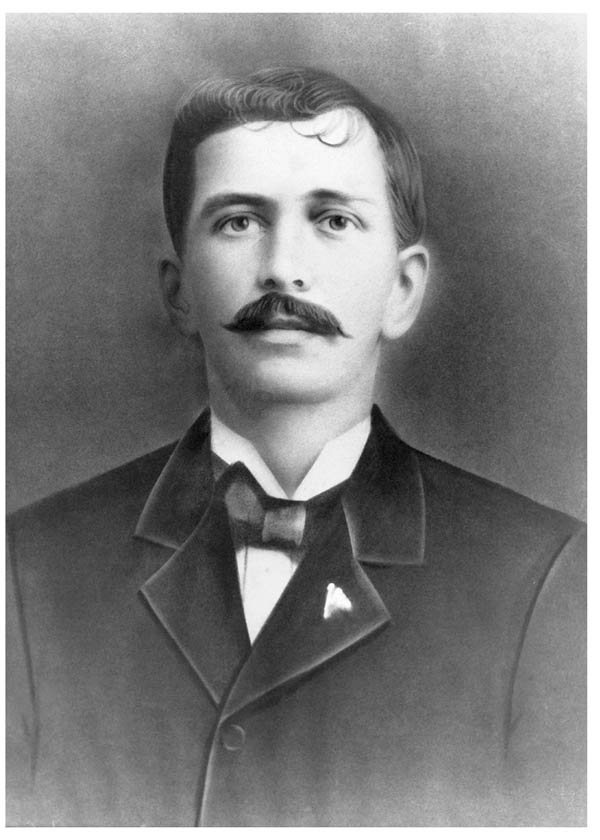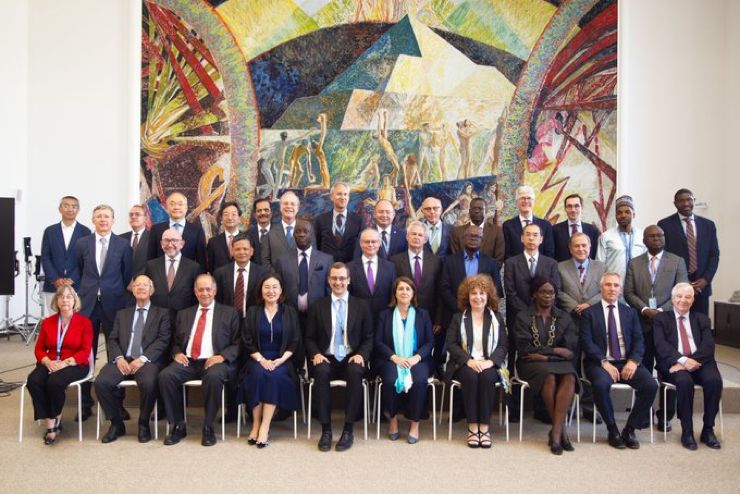|
Ricardo Joaquín Alfaro Jované
Ricardo Joaquín Alfaro Jované (August 20, 1882 – February 23, 1971) served as 16th President of Panama from January 16, 1931 to June 5, 1932. He belonged to the Liberal Party. Early career Alfaro was born in Panama City in 1882. He began a career in the diplomatic service in 1905 as under-secretary for foreign affairs. He was first assigned to the U.S. in 1912 as legal counselor of the Panamanian legation for the Panama-Costa Rica border dispute. Alfaro was also involved in settling numerous disputes arising from the construction of the Panama Canal. From 1915 to 1918, he was judge of a joint commission between Panama and the United States for settling claims relating to expropriations for the construction of the Canal. Later, in 1934 to 1936 and again, in 1953, Alfaro was involved in critical negotiations relating to Panama–United States relations concerning the Canal. From 1922 to 1930, and from 1933 to 1936, Alfaro was Panamanian envoy extraordinary and minister ple ... [...More Info...] [...Related Items...] OR: [Wikipedia] [Google] [Baidu] |
President Of Panama
This article lists the heads of state of Panama since the short-lived first independence from the Republic of New Granada in 1840 and the final Separation of Panama from Colombia, separation from Colombia in 1903. Since 1904 the head of state of Panama has been the President of Panama. List of officeholders ;Political parties ;Other affiliations ;Status ;Symbols Died in office Free State of the Isthmus (1840–1841) Republic of Panama (1903–present) Military dictators of Panama (1968–1989) From 1968 to 1989 a military junta exerted a dictatorship over the country and nominated the president, who himself held little power. The following individuals were leaders of the junta. Timeline Latest election See also * Politics of Panama * List of political parties in Panama * History of Panama References {{Heads of State in Central America Lists of heads of state, Panama, List of presidents of Presidents of Panama, *List Lists ... [...More Info...] [...Related Items...] OR: [Wikipedia] [Google] [Baidu] |
San Francisco, California
San Francisco, officially the City and County of San Francisco, is a commercial, Financial District, San Francisco, financial, and Culture of San Francisco, cultural center of Northern California. With a population of 827,526 residents as of 2024, San Francisco is the List of California cities by population, fourth-most populous city in the U.S. state of California and the List of United States cities by population, 17th-most populous in the United States. San Francisco has a land area of at the upper end of the San Francisco Peninsula and is the County statistics of the United States, fifth-most densely populated U.S. county. Among U.S. cities proper with over 250,000 residents, San Francisco is ranked first by per capita income and sixth by aggregate income as of 2023. San Francisco anchors the Metropolitan statistical area#United States, 13th-most populous metropolitan statistical area in the U.S., with almost 4.6 million residents in 2023. The larger San Francisco Bay Area ... [...More Info...] [...Related Items...] OR: [Wikipedia] [Google] [Baidu] |
Harmodio Arias
Harmodio Arias Madrid (3 July 1886 – 23 December 1962) was a Panamanian politician. He served as acting President of Panama in January 1931 and again from 5 June 1932, to 1 October 1936, after winning the 1932 Panamanian general election, 1932 presidential election. Family His brother Arnulfo Arias was president on three occasions. Harmodio's son, Roberto Arias, Roberto was a diplomat and politician who married the English ballerina Margot Fonteyn. Presidency Madrid originally assumed the presidency after the 1931 coup d'etat against sitting president Florencio Harmodio Arosemena. However, soon after, he was replaced by Ricardo J. Alfaro. He returned to office after winning the popular vote in 1932. During his presidency, he founded the University of Panama, University of Panamá. References [...More Info...] [...Related Items...] OR: [Wikipedia] [Google] [Baidu] |
List Of Presidents Of Panama
This article lists the heads of state of Panama since the short-lived first independence from the Republic of New Granada in 1840 and the final separation from Colombia in 1903. Since 1904 the head of state of Panama has been the President of Panama. List of officeholders ;Political parties ;Other affiliations ;Status ;Symbols Died in office Free State of the Isthmus (1840–1841) Republic of Panama (1903–present) Military dictators of Panama (1968–1989) From 1968 to 1989 a military junta A military junta () is a system of government led by a committee of military leaders. The term ''Junta (governing body), junta'' means "meeting" or "committee" and originated in the Junta (Peninsular War), national and local junta organized by t ... exerted a dictatorship over the country and nominated the president, who himself held little power. The following individuals were leaders of the junta. Timeline Latest election See also * Politic ... [...More Info...] [...Related Items...] OR: [Wikipedia] [Google] [Baidu] |
Nancy Ames
Nancy Ames (born Nancy Hamilton Alfaro; September 30, 1937) is an American folk singer and songwriter. She regularly appeared on the American version of the television series ''That Was the Week That Was''. The TW3 Girl, as she was known, sang the show theme and special material. Personal life Ames was born in Washington, D.C., the granddaughter of Ricardo Joaquín Alfaro, who served as President of Panama from 1931 to 1932 and who in 1949 was chairman of the legal committee of the Third session of the United Nations General Assembly that drew up the text of the Convention on Genocide. The daughter of a physician, she grew up in Washington. She attended Holton-Arms School and Bennett College, both of them for girls. By 1964, she was married to Romanian hypnotist Triaian Boyer. By 1968, they had divorced. After the divorce, she married Jay Riviere, a golf course designer. They had one child, a daughter, Nancy, but ultimately divorced. Ames has resided in Houston, Texas since 1 ... [...More Info...] [...Related Items...] OR: [Wikipedia] [Google] [Baidu] |
McLean, Virginia
McLean ( ) is an Unincorporated area#United States, unincorporated community and census-designated place in Fairfax County, Virginia, United States. The population of the community was 50,773 at the 2020 United States census, 2020 census. It is located between the Potomac River and Vienna, Virginia, Vienna within the Washington metropolitan area. McLean is home to many wealthy residents such as diplomats, military, members of Congress, and high-ranking government officials partially due to its proximity to Washington, D.C., the Pentagon and the Central Intelligence Agency. It is the location of Hickory Hill (McLean, Virginia), Hickory Hill, the former home of Ethel Kennedy, the widow of Robert F. Kennedy. It is also the location of Salona (McLean, Virginia), Salona, the former home of Henry Lee III, Light-Horse Harry Lee, the American Revolutionary War, Revolutionary War hero. History The community received its name from John Roll McLean, the former publisher and owner of ''The ... [...More Info...] [...Related Items...] OR: [Wikipedia] [Google] [Baidu] |
Potomac, Maryland
Potomac () is an Unincorporated area#United States, unincorporated community and census-designated place in Montgomery County, Maryland, United States. As of the 2020 United States census, 2020 census, it had a population of 47,018. It is named after the nearby Potomac River. A part of the Washington metropolitan area, many Potomac residents work in nearby Washington, D.C., and Northern Virginia. History The land that is now Potomac was first settled by Edward Offutt in 1714 after he was granted a land grant of a region known as Clewerwell by Cecilius Calvert, 2nd Baron Baltimore, Lord Baltimore. His grant of land was by the Tehogee Indian Trail, an Indian trade route built by the Canaze Native Americans in the United States, Native American nation in 1716. Throughout the 18th century, what became known as "Offutts Crossroads" was a small, rural community which served planters and travelers. In the 19th century, a few small dwellings had been built along with a tavern established ... [...More Info...] [...Related Items...] OR: [Wikipedia] [Google] [Baidu] |
International Court Of Justice
The International Court of Justice (ICJ; , CIJ), or colloquially the World Court, is the only international court that Adjudication, adjudicates general disputes between nations, and gives advisory opinions on International law, international legal issues as interpretation of international treaties, borders disputes and human rights cases. It is one of the United Nations System#Six principal organs, six organs of the United Nations (UN), and is located in The Hague, Netherlands. The ability to file a case before the ICJ is limited exclusively to recognized governments of states. The ICJ is the successor of the Permanent Court of International Justice (PCIJ), which was established in 1920 by the League of Nations. After the World War II, Second World War, the League and the PCIJ were replaced by the United Nations and ICJ, respectively. The Statute of the ICJ, which sets forth its purpose and structure, draws heavily from that of its predecessor, whose decisions remain valid ... [...More Info...] [...Related Items...] OR: [Wikipedia] [Google] [Baidu] |
Genocide
Genocide is violence that targets individuals because of their membership of a group and aims at the destruction of a people. Raphael Lemkin, who first coined the term, defined genocide as "the destruction of a nation or of an ethnic group" by means such as "the disintegration of [its] political and social institutions, of [its] cultural genocide, culture, linguicide, language, national feelings, religious persecution, religion, and [its] economic existence". During the struggle to ratify the Genocide Convention, powerful countries restricted Lemkin's definition to exclude their own actions from being classified as genocide, ultimately limiting it to any of five "acts committed with intent to destroy, in whole or in part, a national, ethnical, racial or religious group". While there are many scholarly Genocide definitions, definitions of genocide, almost all international bodies of law officially adjudicate the crime of genocide pursuant to the Genocide Convention. Genocide has ... [...More Info...] [...Related Items...] OR: [Wikipedia] [Google] [Baidu] |
International Law Commission
The International Law Commission (ILC) is a body of experts responsible for helping develop and codify international law. It is composed of 34 individuals recognized for their expertise and qualifications in international law, who are elected by the United Nations General Assembly (UNGA) every five years. The ideological roots of the ILC originated as early as the 19th century when the Congress of Vienna in Europe developed several international rules and principles to regulate conduct among its members. Following several attempts to develop and rationalize international law in the early 20th century, the ILC was formed in 1947 by the UNGA pursuant to the Charter of the United Nations, which calls on the Assembly to help develop and systematize international law. The Commission held its first session in 1949, with its initial work influenced by the Second World War and subsequent concerns about international crimes such as genocide and acts of aggression. The ILC has since held an ... [...More Info...] [...Related Items...] OR: [Wikipedia] [Google] [Baidu] |
Convention On Genocide
The Convention on the Prevention and Punishment of the Crime of Genocide (CPPCG), or the Genocide Convention, is an international treaty that criminalizes genocide and obligates state parties to pursue the enforcement of its prohibition. It was the first legal instrument to codify genocide as a crime and the first human rights treaty unanimously adopted by the United Nations General Assembly on 9 December 1948, during the third session of the United Nations General Assembly. The Convention entered into force on 12 January 1951 and has 153 state parties . The Genocide Convention was conceived largely in response to World War II, which saw atrocities such as the Holocaust that lacked an adequate description or legal definition. Polish-Jewish lawyer Raphael Lemkin, who had coined the term genocide in 1944 to describe Nazi policies in occupied Europe and the Armenian genocide, campaigned for its recognition as a crime under international law. Lemkin also linked colonialism with ... [...More Info...] [...Related Items...] OR: [Wikipedia] [Google] [Baidu] |







